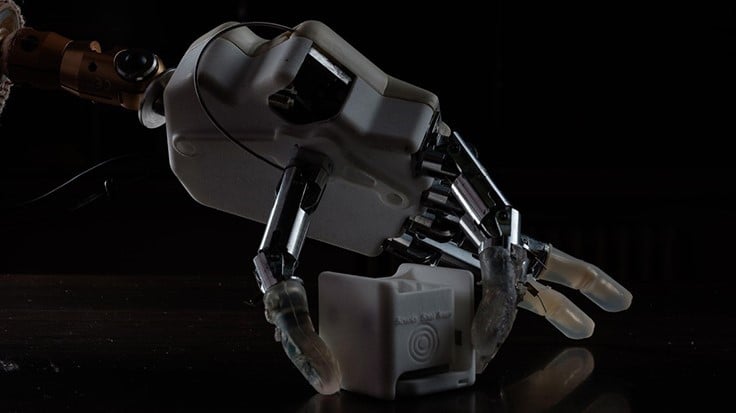Physical interactions with the world around us drive our perceptions of life. The human ability to manipulate our surroundings in a precise manner is what allows for the production of music from a piano, the construction of a building, or the writing of this article. Few people stop to appreciate how much our hands do on a daily basis. In many ways they are the mechanism by which we leave our mark on the world. It is hard to imagine a life without hands or the ability to touch, feel, and manipulate. Whether it be through trauma or congenital malformations, many people in the world are missing one or both of their hands. While humans are incredibly resilient and resourceful, it is easy to imagine the difficulties that would come from such a condition.
In 1999 surgeons at the University of Louisville attempted the first hand transplant in the US. If you are unfamiliar with this surgical milestone, it was performed on Matthew David Scott who had lost his hands in a fireworks accident. The logistics were similar to any other solid organ transplant wherein a team of surgeons precisely planned out the attachment process and then waited for the availability of a donor. After the surgery was completed Matthew had to go through years of physical therapy and a lifetime of immunosuppressive treatment. Not to mention the constant vigilance watching for rejection. While incredibly innovative and life changing, the procedure clearly comes with a number of hurdles. Perhaps one of the most significant hurdle being the supply of donor hands.
Insert technology into the story. For years the dream has been to create a prosthesis that could be as close to a real hand as possible. In fact, the goal of all surgery and devices is for people to be able to attain a sense of normalcy. To do this in the realm of prostheses, multiple dimensions must be created. One  of the most elusive has been the idea of proprioception, also known as the bodies’ ability to understand where it is in space. To fully understand this concept, imagine the last time you grabbed a glass from a cabinet above your head. I can only assume that you simply reached for it and grabbed it. However, imagine using a crane game from an arcade to grab that same glass. You would have to move the crane in one dimension at a time. First you would move the crane claw upwards to the correct height, followed by horizontally at the correct location, and then finally forward until you are hovering above the glass. Oftentimes this exercise entails moving your own body to view the crane claw at multiple angles and, if you are anything like me, you will move the crane with small karate chops to move it ever so slightly to ensure it is in the perfect position. To put it simply, our bodies have proprioception but we do not have proprioception with that claw.
of the most elusive has been the idea of proprioception, also known as the bodies’ ability to understand where it is in space. To fully understand this concept, imagine the last time you grabbed a glass from a cabinet above your head. I can only assume that you simply reached for it and grabbed it. However, imagine using a crane game from an arcade to grab that same glass. You would have to move the crane in one dimension at a time. First you would move the crane claw upwards to the correct height, followed by horizontally at the correct location, and then finally forward until you are hovering above the glass. Oftentimes this exercise entails moving your own body to view the crane claw at multiple angles and, if you are anything like me, you will move the crane with small karate chops to move it ever so slightly to ensure it is in the perfect position. To put it simply, our bodies have proprioception but we do not have proprioception with that claw.
Researchers from EPFL, the Sant’Anna School of Advanced Studies in Pisa and the A. Gemelli University Polyclinic in Rome, have created a new hand prosthesis that can give the user proprioception. Not only have the created proprioception but also have added in tactile sensations to allow patients to feel the objects that they are holding. The device works by integrating with the patients’ nervous system and thus allowing it to be a true extension of the patient. This device moves prosthetics beyond the realm of tools that can help people with physical disabilities and into the realm of becoming a part of a person. Ignoring the philosophical and existential topics that could easily blossom from discussing this technology, the innovation and creativity are themselves beyond amazement.
This is the ultimate example of a user interface. While medical researchers are developing technologies to give the sense of touch back to people who have lost it, Xymox is spending a lot of time developing technologies to provide the best touch experience for our customers’ devices.
We believe touch matters, the way people interface with things, specifically devices, is critical to our customers’ success. Membrane switches are a tried and true technology, but as technology continues to evolve, so does the way people want to interface with machines. Touch screens are rapidly becoming the expectation for human to machine interfaces (HMIs).
Xymox and the medical researchers are Enabling the Power of Touch®, allowing for the sensation of touch!
A special thanks to our guest blogger: Dr. Taylor Jaraczewski, Surgical Resident at Froedtert Hospital

